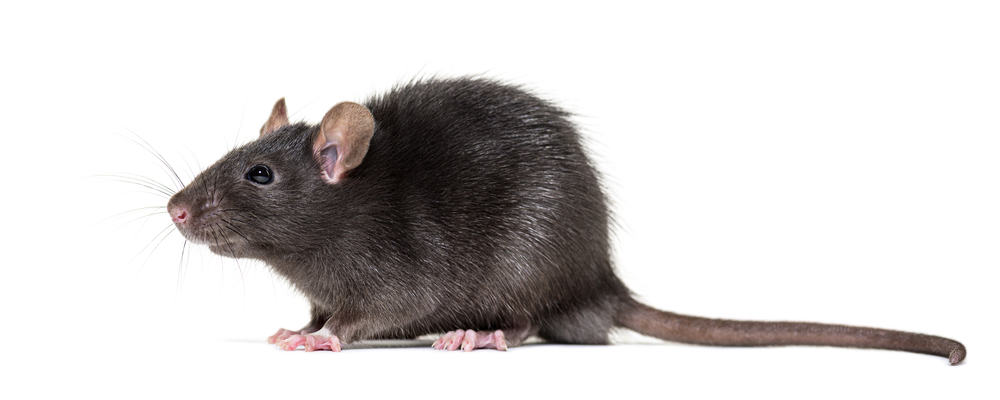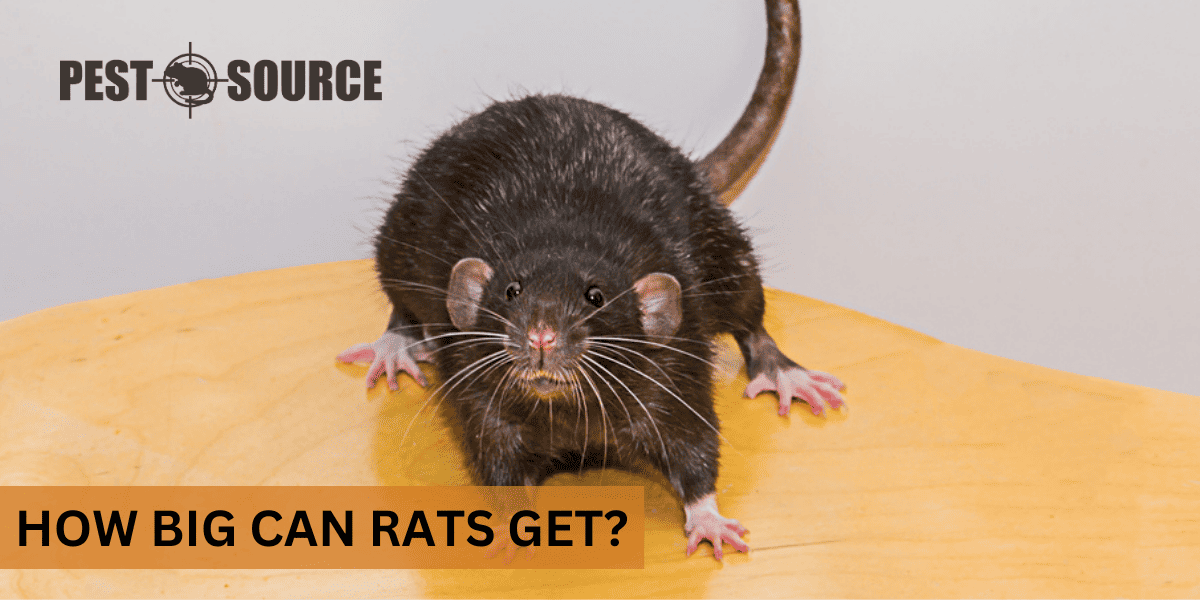Rats can vary significantly in size, but some species, like the Norway rat, can grow up to 9-11 inches in body length, with a tail almost equally long. This post will delve into the factors influencing rat size, including species, environment, and diet. Understanding the potential size rats can reach helps in identifying them and assessing the scale of an infestation.
POINTS
- Rats can vary significantly in size, with some species like the Norway rat reaching up to 20 inches in length including the tail, while others like the Osgood’s Vietnamese rat can be half that size.
- The growth rate of rats is rapid, with pups developing into adults within a few months, and factors such as species, gender, and environmental conditions can influence their growth and final size.
- Environmental factors like diet, habitat, and the availability of food sources significantly affect the size rats can reach, with those in abundant environments typically growing larger.
- Genetic factors and selective breeding play a role in the size of domesticated rats, with certain breeds being predisposed to larger sizes due to breeding for specific traits.
- A rat’s size is an indicator of its health, with deviations from the average size potentially pointing to health issues such as obesity or malnutrition, and proper care including a balanced diet and regular check-ups is crucial for their well-being.
How Big Do Rats Get?
Rats, often seen as pests, can vary significantly in size depending on numerous factors, including their species, environment, and nutrition. In general, the maximum size rats can reach can be quite surprising to those unfamiliar with these resilient creatures. Exceptional cases have recorded rats growing to lengths that rival small domesticated pets.
Variations in Size Among Different Rat Species
There are numerous species of rats around the world, and their size can vary dramatically. For instance:
- The Norway rat (Rattus norvegicus), also known as the brown rat, is one of the largest, with body lengths reaching up to 10 inches (25 cm) and tails that can add another 8 inches (20 cm).

- The Roof rat (Rattus rattus), or black rat, is slightly smaller, with an average body length of 7 to 8 inches (18–20 cm) and a longer tail.

- In contrast, some of the smaller species, like the Osgood’s Vietnamese rat (Rattus osgoodi), can be half the size of their larger cousins.
Comparison of Wild and Domesticated Rat Sizes
Wild rats tend to be larger and more robust than domesticated or pet rats due to the harsher conditions they face, which can lead to more substantial physical development. Pet rats, such as the fancy rat, are bred for temperament and appearance, which can influence their size. Domesticated rats are generally smaller, with a more consistent size due to controlled breeding and diet.
Growth and Development of Rats
Rats go through a fascinating growth process from birth to adulthood. Newborn rats are called pups and are born blind, hairless, and entirely dependent on their mother.
The Growth Process from Birth to Adulthood
Rats grow rapidly after birth, gaining weight and developing fur within the first two weeks. They open their eyes around the 15-day mark and are weaned at about 3 to 4 weeks old. Rats are considered juveniles until they reach sexual maturity, which can occur as early as 5 weeks old in some species.
Growth Rates: Fast Facts
- Rats are known for their rapid growth rate. They can grow from a tiny pup into a full-grown adult in just a few months.
- They are considered fully grown by 5 to 6 months of age, although they can continue to fill out and gain weight beyond this age.
- Growth rates can vary between species and even within a species due to gender differences. Males typically grow larger and heavier than females.
Average Size and Weight of Rats
When discussing the average size and weight of rats, it’s essential to consider the most common species encountered by humans.
Common Rat Species: Averages
- The average adult Norway rat weighs around 350 to 450 grams (12–16 oz) and can grow up to 20 inches (50 cm) in length, including the tail.
- Roof rats are generally lighter, weighing in at 150 to 250 grams (5–9 oz) with a similar total length due to their longer tails.
Gender Differences in Size
- Male rats are typically larger than females, with more pronounced features such as broader heads and larger feet.
- The size difference can be quite noticeable, especially in species like the Norway rat.
Pet Rat Size Range
- Pet rats, like the fancy rat, are usually smaller than their wild counterparts. They typically weigh between 250 to 500 grams (9–18 oz) for males and 200 to 400 grams (7–14 oz) for females.
- Feeder rats, bred as food for carnivorous pets, are usually not bred for size but rather for reproductive efficiency.
Size Comparison and Variability
To help visualize the size of rats, it’s helpful to compare them to common objects or other animals.
Size Comparison With Common Objects
- A full-grown male Norway rat can be as long as a standard loaf of bread.
- A Roof rat’s body might be roughly the length of a dollar bill.
Factors Contributing to Size Variability
Several factors contribute to the size variability in rats, including:
- Genetics: Just as with humans, a rat’s size can be influenced by the size of its parents.
- Diet: Access to food and its nutritional content play significant roles in a rat’s development.
- Health: Parasites and diseases can impede growth, leading to smaller sizes.
Myths and Misconceptions
There are many myths surrounding the size of rats, such as the idea of “rat kings” or rats growing to the size of cats. While rats can get quite large, these are exaggerations and not representative of the average rat.
Environmental and Genetic Influences on Rat Size
Diet and Habitat: Environmental Effects on Size
The size of a rat can be greatly influenced by its environment, particularly by the diet and habitat it has access to. Rats that live in areas with abundant food sources and less competition tend to grow larger than those in scarce environments.
Nutritional Impact on Growth
- Abundant Food Supply: Rats with access to a variety of nutritious foods will generally reach their maximum potential size.
- Limited Resources: Conversely, rats living in environments where food is scarce may not grow as large due to nutritional deficiencies.
Habitat’s Role in Development
- Urban vs. Rural: Rats in urban areas often encounter different food sources, like garbage and human leftovers, which can affect their size compared to rural rats that may have a more natural diet.
- Shelter and Safety: Rats with secure nesting areas that protect them from predators and harsh weather conditions are more likely to thrive and grow to a larger size.
Genetic Factors and Domestication
Selective breeding has a significant impact on the size of domesticated rat breeds. Breeders often select for specific traits, including size, which can lead to larger or smaller varieties of pet rats.
Breeding for Size
- Fancy Rats: These pet rats are bred for a range of desirable characteristics, including size, color, and temperament.
- Genetic Predisposition: Some rat strains have been genetically predisposed to be larger, such as those bred for laboratory research.
Geographic Size Variations
Rats from different geographic locations can exhibit size differences due to the unique environmental pressures and available resources in each area.
- Tropical vs. Temperate: Rats in tropical regions may grow larger due to a year-round abundance of food and warmer temperatures.
- Island Gigantism: Some rat populations on islands have evolved to be significantly larger than their mainland counterparts, a phenomenon known as island gigantism.
Why Are New York Rats So Big?
New York rats are so big due to a combination of factors including abundant food waste providing a rich diet, less predation compared to wild environments, and the “island effect” which can lead to increased body sizes in urban settings. The city’s dense population and vast amount of refuse give rats ample caloric intake to grow larger than their rural counterparts. Food availability also contributes to faster reproduction rates, leading to a greater selection of genes that may favor larger size. Moreover, the adaptability of rats allows them to thrive in New York’s varied urban habitats, further promoting the growth of larger individuals.



